My first knowledge of computers were what I saw on futuristic television programs such as Thunderbirds, Joe 90, Space 1999 and UFO. Massive wheels full of tape spinning back and forth as they bleeped and flashed their lights.
At school we did not even have calculators, although one school I attended was one of the first to use Accumulators. It wasaround 1973/74 we were first offered the choice of Computer Studies, although it would be over 2 years before we even saw a computer in person. After drawing endless Flow-Diagrams we finally got on to producing the required punch cards, jabbing at the little boxes to push out the block, and normally stabbing fingers in the process.
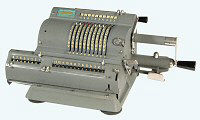
The nearest we ever got to a calculator of computer whilst at school.
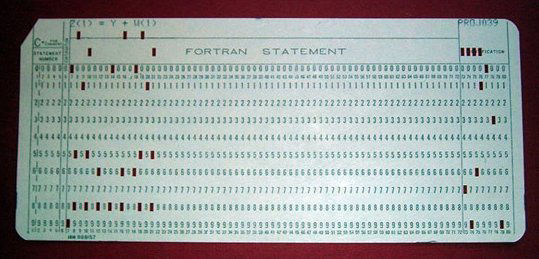
We started 'Computer Science' in the 70's, all through the school term we would punch out endless punch cards.
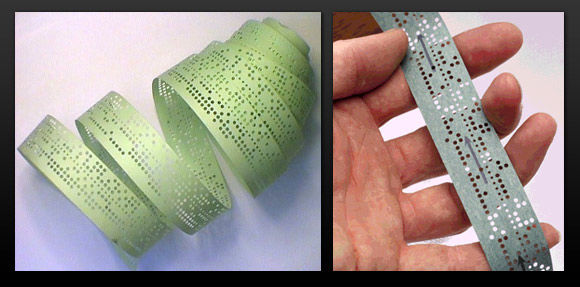
Finally at the end of the year we were taken to the Woolwich Polytechnic Computing Cetre, our stacks of cards fed into a machine that converted them to punch tape.
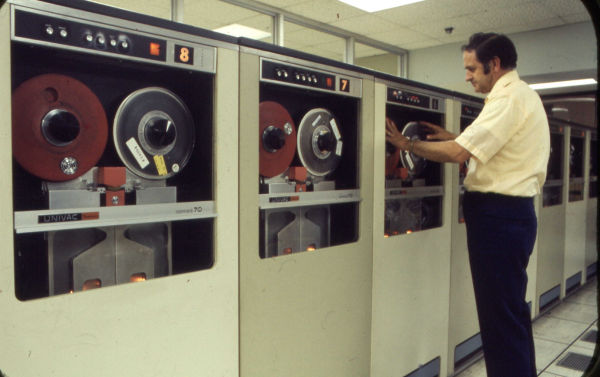
The punch tape was then fed to another machine that put the info on a vacuum disk. This was then fitted to a machine against the wall, which printed the end result of our work. A letterhead and addressed envelope!
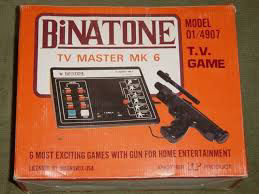
After leaving school in 1975 the nearest thing to a computer available at home was 'Pong'. A tennis game that you played on a television set.
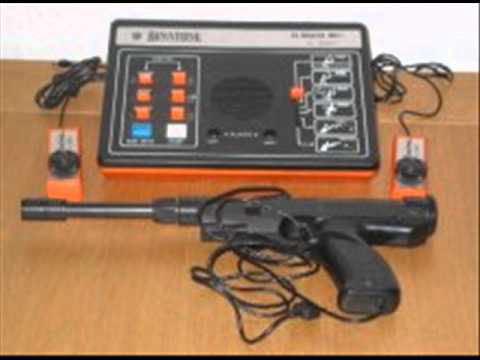
The version I had came with a gun as well as controllers, you could shoot at a moving dot on screen.
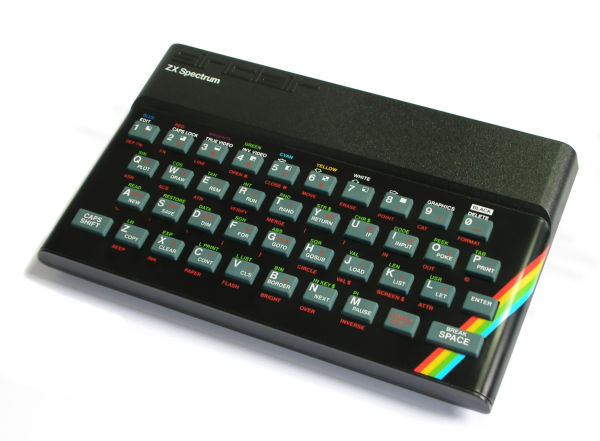
Although the BBC released a home computer it was far beyond what most people could afford. It was Clive Sinclair's ZX81 and then the ZX Spectrum that really opened up the computing world to all.
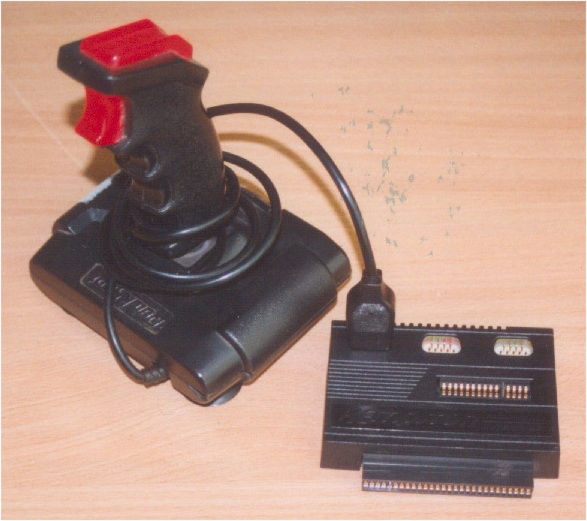
There was no mouse, everything was done using buttons. Joysticks could be bought to make games easier, but these needed an interface to connect to the computer.
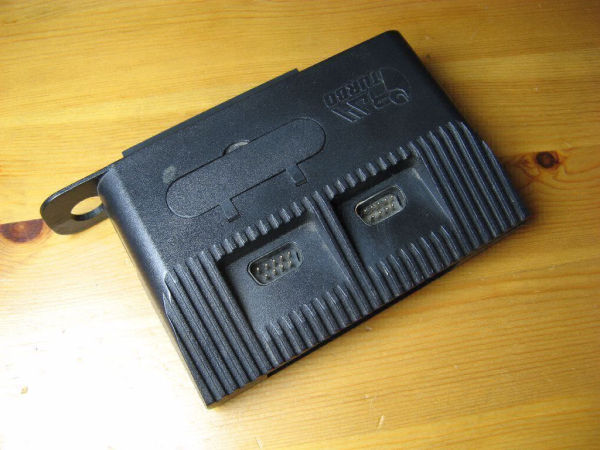
There were really only 2 intefaces for the spectrum, the Kempston and the Ram-Turbo which had a built in cartridge port.
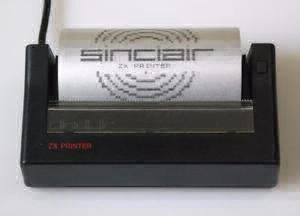
Printing on special and expensive 4" wide thermal paper was ok for printing out code, but no good for writing anything else.
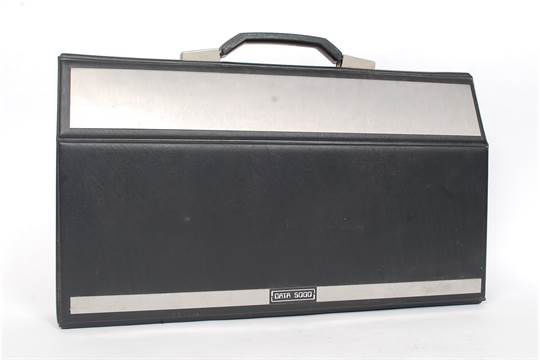
To keep all the computers leads and bits together cases were made. However there was no room in them for the required cassette recorder.
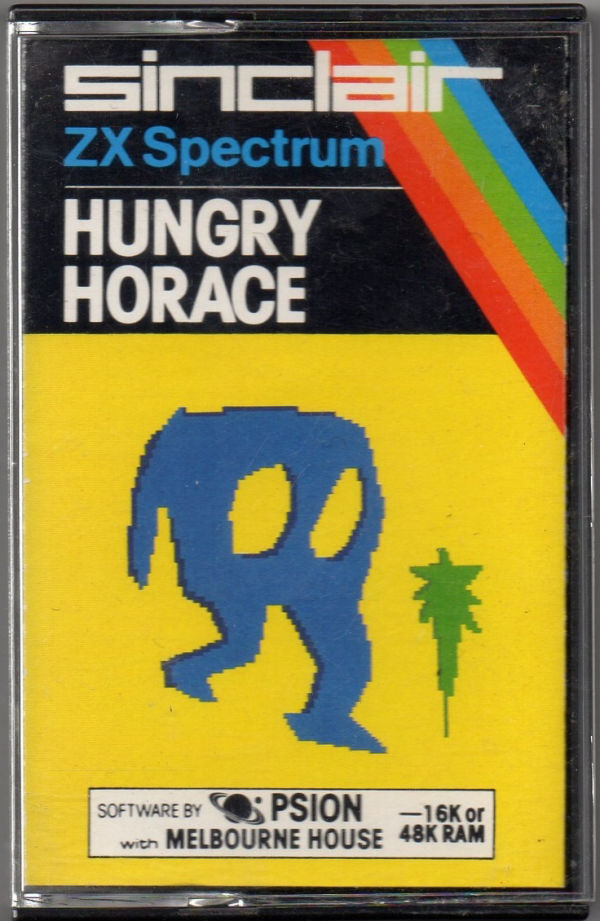
The computer did very little on its own, it needed programs loaded on via a cassette recorder which also saved the programs you created.
Many made fun of the Spectrum because of its rubber keys, it was not any good for authoring books, but spreadsheet and database programs were available. They came with a cassette full of educational and demonstration programs and a BASIC maual that taught you step by step how to write your own programs. It was an excellent start into programming and I created many useful programs of my own. I also worked with a friend who was an ex air traffic controller and between us developed a full simulation game, this was bought from us by Andrew Hewson who released it as 'Heathrow Air Traffic Control'.
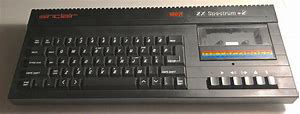
As Amstrad started producing their competetive computer with a real keyboard, Sinclair redesigned the Spectrum into the Spectrum+. Variations later came from this with with built in tape decks, disk drive versions.
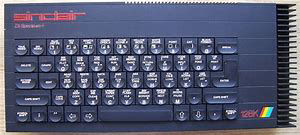
The original Spectrum had 32k of memory, a newer version was designed with 128k.
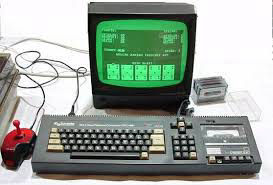
Amstrad came up with their version that had a real keyboard and built-in tape deck. but it was green screen.
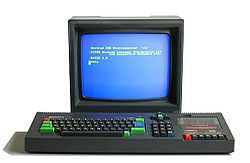
They later released a colour version.
The software was not compatible between the two makes.
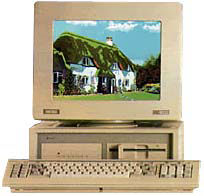
MY FIRST IBM STYLE PERSONAL COMPUTER
It cost me over £1600.00 in 1986. At the time it was a field leader with both 7" floppy disk drive and a massive 20 megabyte hard disk.
All programs were extras, so the word-processing software and spreadsheet program would of cost another £100 or so, then of course you had to have a printer. But It did come with a mouse !
The PC1640 was a sturdy workhorse, I used it for many years without any issues, and sold it on when I eventually upgraded.
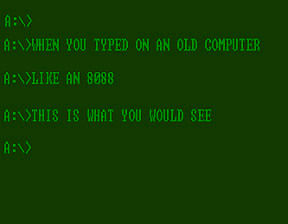
Display quality at first was poor, but it improved with colour computers and hasn't stopped improving since.
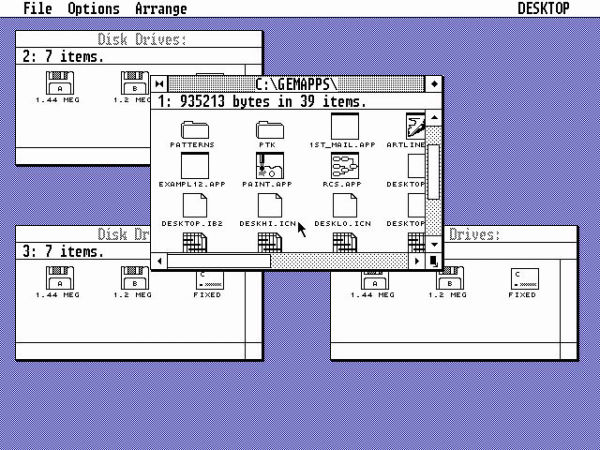
The Amstrad PC 1640 came with GEM, (Graphics Environment Manager). This was way before even Windows 3.1 and much easier to use even after 3.1's release.
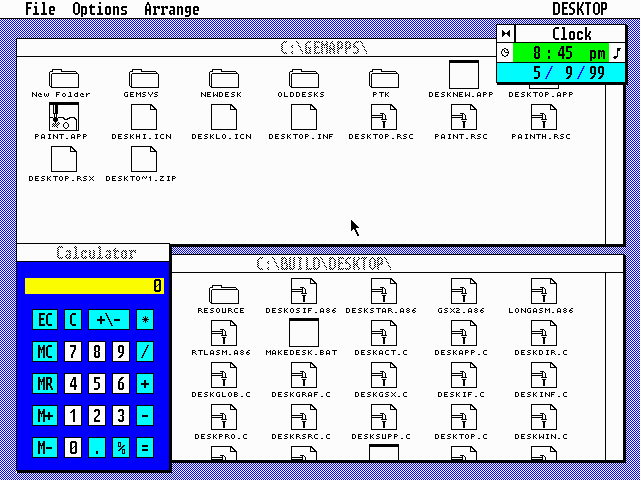
You could copy, paste, delete and move files between folders using the mouse. It removed the need for basic programming knowledge. It also had in-built calculator and graphics paint program.
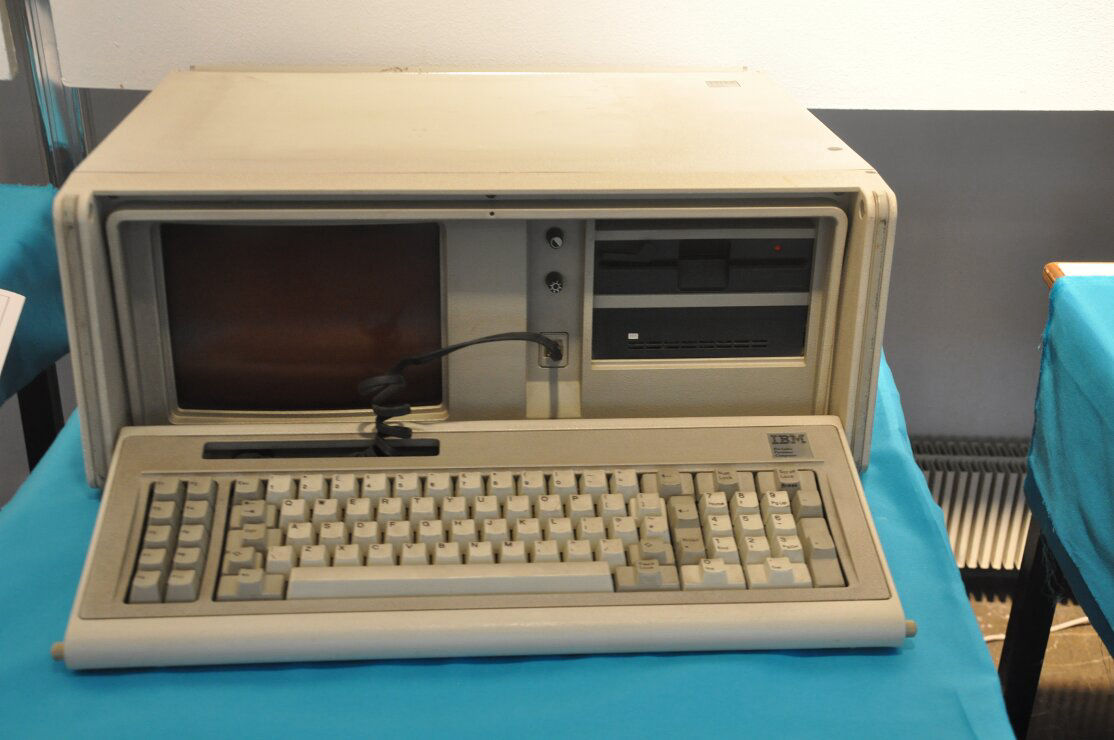
The big names in business computing were still making personal computers, IBM made the forerunner of the laptop with its 'Portable', this should of been called 'Luggable' as it weighed as much as large car battery and had a tiny built-in 6" green screen.
I have had many computers since the Amstrad PC 1640, seen the gradual blending of computer operating systems so that all used the same, this enabled them to use the same software and be able talk to each other over a Network.
There have been a range of Operating Systems, BASIC, C, C+, Linux and of course Microsoft Windows. Now there are just a few left with the majority using Windows, with a few using Linnux or Apple Macintosh systems. But now even those can communicate between them.
I have done so much using a PC over the years, I have written many books, created many databases and spreadsheets, produced endless graphics, and made many websites.
I use my PC for everything, as a Jukebox for my over 30,000 music tracks, player for my many films and photographs, to watch TV, to track my banking and my health, for learning, for teaching, and the biggest of all Communicating with people all over the world.
My 40" Flat Screen display is just one of two, and I have several older computers still active and linked together. I do have laptops, but prefer to sit at my desk with much larger screens, a mouse and a traditional keyboard.
1982 - 2024

With just 48K of usable memory, and using BASIC operating system. There was no permanent in-built storage, yet it played games in colour on an attached television. Programs were loaded through a Cassette recorder from standard audio tapes. Keys were rubber and there was no mouse, yet you could buy a joystick.

the PC1640 was top of the range, costing around £1600 in 1989. It came in various versions, a single 7" Floppy Disk, a twin 7" Floppy Disk, or the one I had which along with the 7" Floppy Disk it also had a Hard Disk that could store information permanently. It still ran on BASIC, but had the GEM visual operating system built-in.
The hard disk was 20 MB in size, yet the disk could hold many programs alonside the operating system, such as a wordprocessor and spreadsheet. It had a mouse, it could play music from CD, and with a plug-in modem it later connected to the early internet.
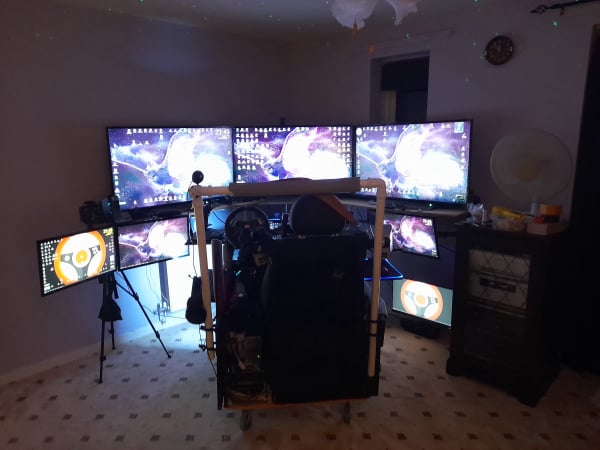
With a powerful Intel Core i9-10850K @3.60 ghz processor, 80 GB of memory, 16 TB of data storage, and using a Nvidia GeForce GTX 4060 16GB Graphics Card producing full 4K, and full 5.1. surround sound system.
The speed, power and quality of graphics and sound are a far cry from the Spectrum or Amstrad. My system apart from being a powerhouse of a computer, is also a fully fledged Flight and Driving Simulator.